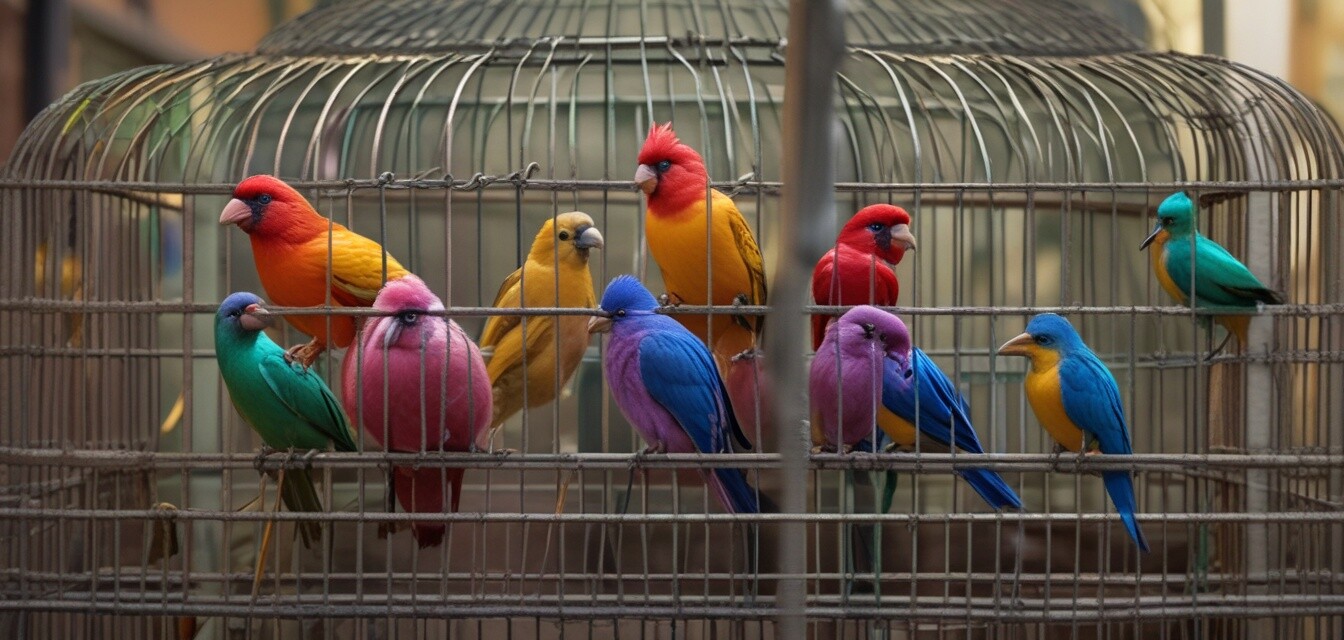
How to recognize and treat common bird injuries
Key Takeaways
- Common bird injuries include feather plucking, wing injuries, and beak injuries.
- Recognizing signs of pain or distress in birds is crucial for prompt treatment.
- Basic first aid knowledge can make a significant difference in your bird's recovery.
- Consulting with a veterinarian is recommended for serious injuries or conditions.
Caring for your feathered friends goes beyond just providing food and water. It's important to be aware of the potential injuries your cage birds may suffer and how to manage them effectively. This guide offers insights into recognizing common bird injuries and the appropriate treatment options for each. Understanding these facts will help ensure your birds live happy, healthy lives with less distress.
Common Bird Injuries
| Injury Type | Signs & Symptoms | Potential Causes |
|---|---|---|
| Feather plucking | Missing feathers, skin irritation, excessive preening | Stress, boredom, allergies, or skin conditions |
| Wing injuries | Reduced ability to fly, visible swelling, limping | Collisions with objects, rough handling, or cage accidents |
| Beak injuries | Broken or chipped beak, excessive bleeding, difficulty eating | Chewing on hard objects, fights with other birds |
| Foot injuries | Swelling, limping, reluctance to perch | Getting caught in cage bars, improper landing |
| Skin infections | Redness, swelling, discharge, difficulty preening | Improper cage hygiene, injury, or exposure to irritants |
Recognizing Signs of Distress
Birds are experts at hiding pain. Observing changes in behavior can help you detect injuries early. Here are some common signs of distress:
- Decreased appetite or excessive feeding behaviors
- Changes in vocalization or unusual quietness
- Fluffed feathers and lethargy
- Frequent scratching or beak rubbing
- Avoidance of interaction or usual activities
First Aid for Common Injuries
Feather Plucking
If your bird is plucking its feathers, consider these steps:
- Identify potential stressors, such as changes in the environment.
- Provide more stimulation through toys and social interaction.
- If necessary, consult with a veterinarian for behavioral therapy options.
Wing Injuries
For wing injuries, follow these guidelines:
- Keep the bird calm and in a quiet environment.
- Avoid forcing it to fly or perch.
- Use an ice pack wrapped in a cloth to reduce swelling.
- Visit a veterinarian for a thorough diagnosis and treatment plan.
Beak Injuries
In the case of beak injuries:
- Assess the severity of the injury.
- If bleeding occurs, apply slight pressure with a clean cloth.
- Ensure the bird can eat soft foods until the injury heals.
- Consult a veterinarian if the injury seems serious.
Foot Injuries
To manage foot injuries:
- Examine the foot for visible damage or swelling.
- Provide a soft area for your bird to rest and avoid perching.
- Encourage proper movement without forcing the bird.
- Seek veterinary care if the injury does not improve.
Skin Infections
For suspected skin infections:
- Maintain optimal hygiene in the bird's habitat.
- Clean the infection area gently with a damp cloth.
- Look for signs of irritation or worsening conditions.
- Visit a veterinarian for appropriate medications.
When to Consult a Veterinarian
Understanding when to seek professional help is critical for the well-being of your bird. If you notice any of the following signs, contact a veterinarian:
- Severe injuries with excessive bleeding
- Signs of extreme stress or depression
- Infections that do not respond to home care
- Unusual lumps or bumps
- Persistent behavioral changes
Creating a Safe Environment
Preventing injuries begins with a well-maintained and safe environment. Here are some tips to consider:
- Choose the right cage size for your bird species.
- Avoid placing toys or perches too close to the cage bars.
- Regularly clean the cage to minimize hygienic risks.
- Provide varied activities that keep your bird stimulated.
- Ensure that any sharp items are removed from reach.
Final Thoughts
Understanding and addressing the common injuries your cage bird may experience is essential for their overall health and happiness. By familiarizing yourself with the signs, treatment options, and preventative measures, you will be better equipped to care for your cherished pet. For more information about bird care, consider checking out our comprehensive guides in the Cage Bird Health and Care section.
Pros
- Enhanced knowledge improves bird welfare.
- Timely response can prevent serious injuries.
- Fosters a deeper bond between pet and owner.
Cons
- Veterinary care can be costly.
- Limited first aid knowledge can lead to mishandling.
- Requires ongoing vigilance and care.